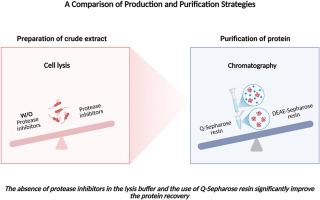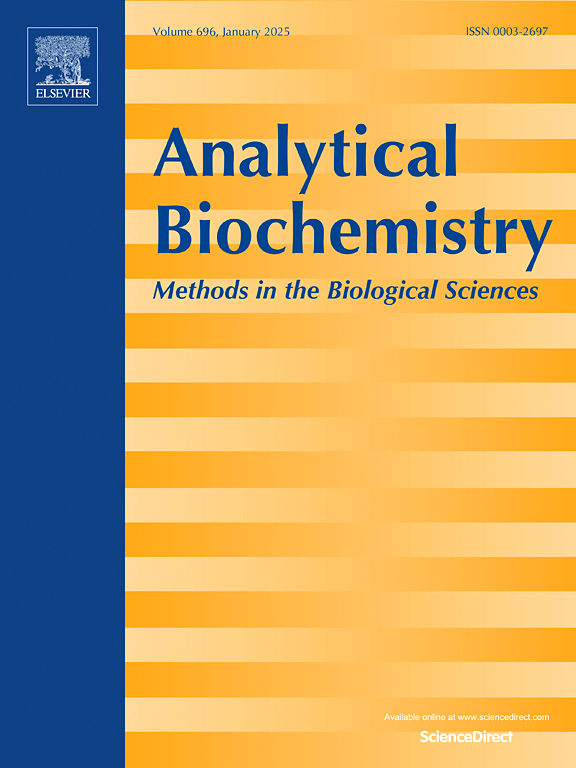H-ferritin nanocages: refined strategy for optimized protein production and purification
IF 2.5
4区 生物学
Q2 BIOCHEMICAL RESEARCH METHODS
引用次数: 0
Abstract
H-ferritin (HFn) nanocages are promising tools in biomedical applications, yet producing sufficient injectable quantities remains challenging. To optimize production, we compared two lysis methods and purification protocols, focusing on the ClearColi BL21(DE3) strain, which features a modified lipopolysaccharide that avoids triggering endotoxin responses in humans. Our findings show that omitting protease inhibitors during lysis and using 20 mM Tris-HCl pH 8.0 buffer with Q-Sepharose resin significantly enhances protein yield. Importantly, these adjustments do not compromise encapsulation efficiency or cytotoxicity, offering a more efficient and cost-effective strategy for obtaining pure, stable HFn suitable for therapeutic use.

h -铁蛋白纳米笼:优化蛋白质生产和纯化的精制策略。
h -铁蛋白(HFn)纳米笼在生物医学应用中是很有前途的工具,但生产足够的可注射量仍然具有挑战性。为了优化生产,我们比较了两种裂解方法和纯化方案,重点研究了ClearColi BL21(DE3)菌株,该菌株具有修饰的脂多糖,可避免引发人体内毒素反应。我们的研究结果表明,在裂解过程中省略蛋白酶抑制剂,并使用20 mM Tris-HCl pH 8.0缓冲液和Q-Sepharose树脂显著提高了蛋白质产量。重要的是,这些调整不会影响包封效率或细胞毒性,为获得适合治疗用途的纯净、稳定的HFn提供了更有效和更具成本效益的策略。
本文章由计算机程序翻译,如有差异,请以英文原文为准。
求助全文
约1分钟内获得全文
求助全文
来源期刊

Analytical biochemistry
生物-分析化学
CiteScore
5.70
自引率
0.00%
发文量
283
审稿时长
44 days
期刊介绍:
The journal''s title Analytical Biochemistry: Methods in the Biological Sciences declares its broad scope: methods for the basic biological sciences that include biochemistry, molecular genetics, cell biology, proteomics, immunology, bioinformatics and wherever the frontiers of research take the field.
The emphasis is on methods from the strictly analytical to the more preparative that would include novel approaches to protein purification as well as improvements in cell and organ culture. The actual techniques are equally inclusive ranging from aptamers to zymology.
The journal has been particularly active in:
-Analytical techniques for biological molecules-
Aptamer selection and utilization-
Biosensors-
Chromatography-
Cloning, sequencing and mutagenesis-
Electrochemical methods-
Electrophoresis-
Enzyme characterization methods-
Immunological approaches-
Mass spectrometry of proteins and nucleic acids-
Metabolomics-
Nano level techniques-
Optical spectroscopy in all its forms.
The journal is reluctant to include most drug and strictly clinical studies as there are more suitable publication platforms for these types of papers.
 求助内容:
求助内容: 应助结果提醒方式:
应助结果提醒方式:


